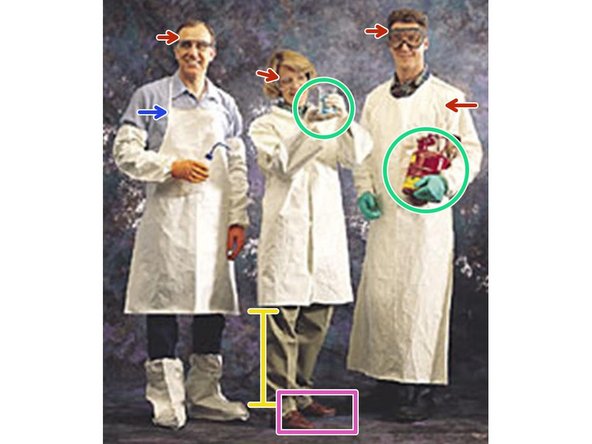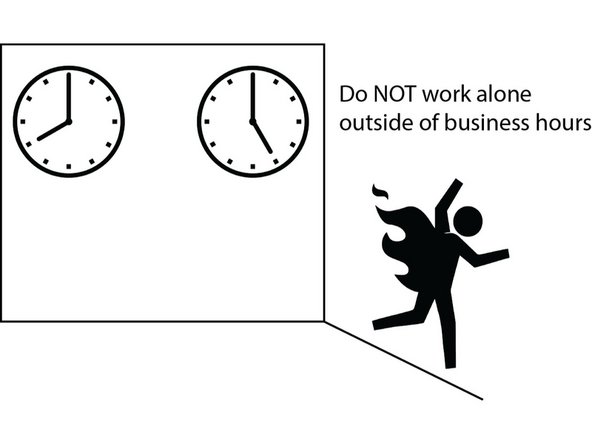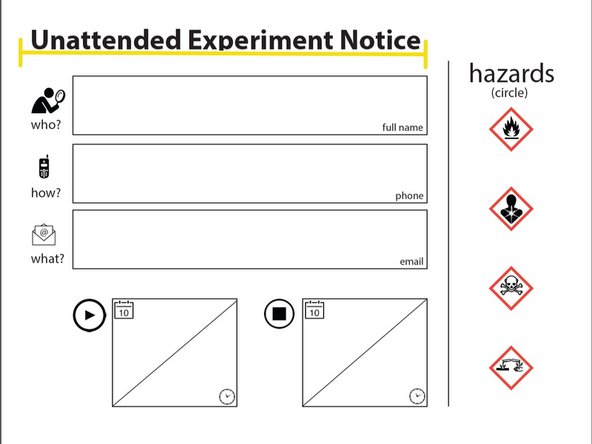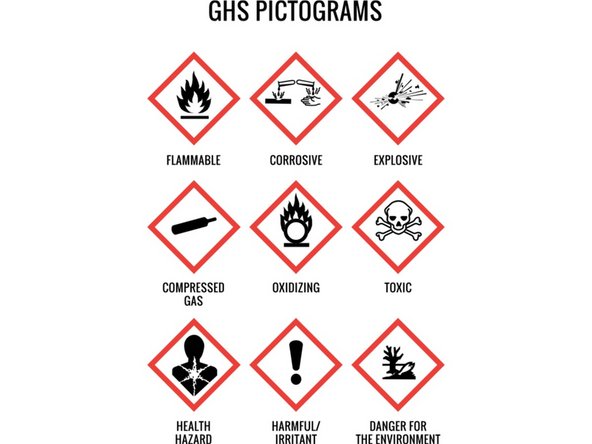Introduction
The protocols for working with hazardous substances are defined in the Chemical Hygiene Plan.
This guide is part 1 of 3 Core Pre-Requisite guides that should be completed prior to working in the lab.
-
-
Surfaces may have residues from prior use.
-
Never bring any food or drink into a lab.
-
Avoid contacting the bench with your skin or cell phone.
-
Do not touch contaminated gloves to anything (i.e., face, clothing, cell phone, writing instruments, papers, etc.)
-
-
-
Substitute non-hazardous alternatives to chemicals whenever possible. (Link to case study tool).
-
Minimize exposure through the use of a fume hood & personal protective equipment.
-
Fume hood sash should be set at highest allowable opening (or lower).
-
Avoid inhaling fumes.
-
Never taste, ingest or allow skin contact to chemicals.
-
Never use lab glassware as food or drink containers.
-
-
-
Long pants
-
Close toed shoes
-
Lab coat or apron
-
Eyewear required for liquids.
-
Type depends on toxicity, see Step 1 to determine what is needed.
-
Appropriate gloves to work with the chemicals
-
Type depends on chemicals, see Step 1 to determine what is needed.
-
-
-
Test gloves by rolling from the open end to ensure there are no unseen holes.
-
Gloves without holes will maintain pressure of the air.
-
-
-
After normal business hours, do not work alone.
-
-
-
Avoid leaving chemicals unattended.
-
If needed, fill out the "Unattended Experiment Notice."
-
Be aware that power and water pressure fluctuates during off hours. Ensure your set up will not become hazardous if there is a loss of power or water pressure.
-
Notices available at fume hood locations.
-
-
-
Pour concentrated acids or bases into solvents.
-
Hydration is exothermic; pouring water into concentrates can cause drops to vaporize or "climb up" the pouring stream, releasing dangerous amounts of thermal energy.
-
For specific molarities or normalities, consult this calculator for the procedure.
-
-
-
Know your potential hazards from the Safety Data Sheet (You will do this in Step 1).
-
Be familiar with emergency procedures (review in the next guide).
-
You are now ready to move on to A2-How to deal with minor accidents.
You are now ready to move on to A2-How to deal with minor accidents.
Cancel: I did not complete this guide.
171 other people completed this guide.










